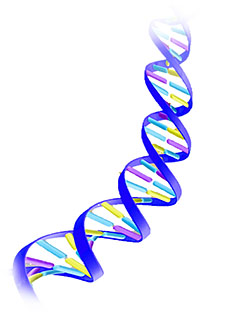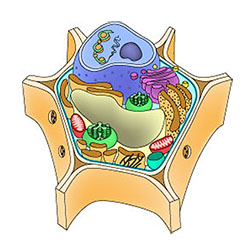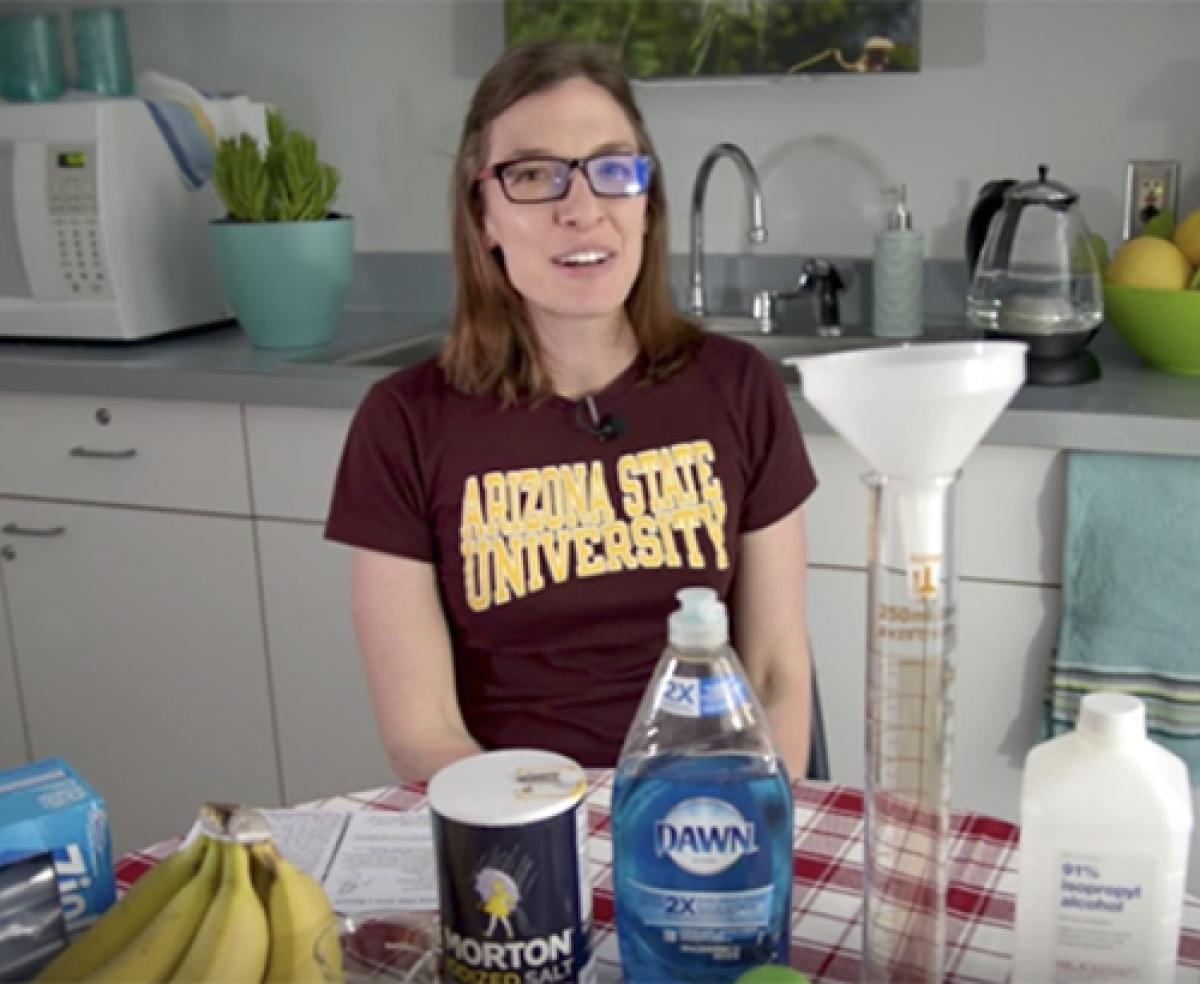Can You Really See DNA?
This short activity helps students visualize one of the most important molecules on the planet, DNA. The activity can be done with simple materials found in most homes. We use bananas, but strawberries or other fruit soft enough to mush up can also be used. The activity is written for students at a middle school or higher level, but with more intense guidance, this activity is useful for students of any age.
Tips for Classroom Implementation
Time Required: 45 minutes
Classroom set-up:
- One container of soap and salt should be more than enough for a large class to use, but we suggest having two of each on hand just in case.
- This activity generally works better with small groups of students each working on their own banana extraction. This also makes it likely that at least one group will have very visible DNA.
Tips:
- Make sure to have extra zip bags and extra coffee filters on hand, in case any break.
- If a coffee filter breaks and banana mush falls to the bottom of the glass, pour it back into the bag, secure a new filter, and pour the mush back in more slowly, letting it drain as you pour.
 Extensions:
Extensions:
When combined with additional reading from Ask A Biologist, or additional short assignments, this DNA extraction activity can meet several learning standards.
Genetic
- The story “DNA ABCs” will help students understand the importance of DNA to life, as well as the chemical and physical structure of DNA.
- The story page “Getting Genetics Straight” will help students differentiate between genes and chromosomes, and understand alleles.
- For high school students, the story “Controlling Genes” will help them understand protein synthesis.
- Students can try to figure out how much DNA is in an adult human body. You can either provide the following information to them, or have them search for it online:
- ~37 trillion cells in an adult human body (3.7 x 1013)
- 6.5 pico-grams of DNA per cell (6.5 x 10-12)
- ~250 grams of DNA or more (~9 ounces)
 Cellular
Cellular
- The story “Building Blocks of Life” will help students understand the cell structure and function.
- The story “Cells Living in Cells” will help students understand the different cell types that exist.
Objectives
- Students will grasp that small molecules are tangible.
- Students will follow directions and understand that basic chemicals (salts and detergents) can be used to break down cells and cell parts and to make molecules stick to other molecules.
- EXTENSION: Students will gain a basic understanding of the structure of DNA.
- EXTENSION: Students will understand cells and that they broke apart the cell membrane and the nuclear membrane to reach the DNA.
Standards
Next Generation Science Standards
High School Life Sciences
HS-LS-1.A: Structure and Function. All cells contain genetic information in the form of DNA molecules. Genes are regions in the DNA that contain the instructions that code for the formation of proteins, which carry out most of the work of cells.
Arizona Science Standards
Strand 4: Life Science
Concept 1: Characteristics of Organisms
Kindergarten PO 1. Distinguish between living things and non-living things.
Grade 6
(Cellular Extension) PO 2. Describe the basic structure of a cell, including: cell wall, cell membrane, and nucleus.
(Cellular Extension) PO 3. Describe the function of each of the following cell parts: cell wall, cell membrane, and nucleus.
(Cellular Extension) PO 4. Differentiate between plant and animal cells.
Concept 2: Molecular Basis of Heredity
Grades 9 – 12 (Genetic Extension) PO 1. Analyze the relationships among nucleic acids (DNA, RNA), genes, and chromosomes.
(Genetic Extension) PO 2. Describe the molecular basis of heredity, in viruses and living things, including DNA replication and protein synthesis.
Common Core standards
Grades 6 - 8:
CCSS.ELA-LITERACY.RST.6-8.3
Follow precisely a multistep procedure when carrying out experiments, taking measurements, or performing technical tasks.
CCSS.ELA-LITERACY.RST.6-8.10
By the end of grade 8, read and comprehend science/technical texts in the grades 6-8 text complexity band independently and proficiently.
DNA basics: 8th grade
Getting genetics straight: 8th grade
Building blocks of life: 7th grade
Grades 9 - 10:
CCSS.ELA-LITERACY.RST.9-10.3
Follow precisely a complex multistep procedure when carrying out experiments, taking measurements, or performing technical tasks, attending to special cases or exceptions defined in the text.
CCSS.ELA-LITERACY.RST.9-10.3
Follow precisely a complex multistep procedure when carrying out experiments, taking measurements, or performing technical tasks, attending to special cases or exceptions defined in the text.
Controlling genes: 9th grade
Cells living in cells: 10th grade
Read more about: Seeing DNA
Bibliographic details:
- Article: DNA Extraction - For Teachers
- Author(s): Dr. Biology
- Publisher: Arizona State University School of Life Sciences Ask A Biologist
- Site name: ASU - Ask A Biologist
- Date published: 14 May, 2016
- Date accessed:
- Link: https://askabiologist.asu.edu/activities/DNA-activity-teachers
APA Style
Dr. Biology. (Sat, 05/14/2016 - 15:34). DNA Extraction - For Teachers. ASU - Ask A Biologist. Retrieved from https://askabiologist.asu.edu/activities/DNA-activity-teachers
Chicago Manual of Style
Dr. Biology. "DNA Extraction - For Teachers". ASU - Ask A Biologist. 14 May 2016. https://askabiologist.asu.edu/activities/DNA-activity-teachers
Dr. Biology. "DNA Extraction - For Teachers". ASU - Ask A Biologist. 14 May 2016. ASU - Ask A Biologist, Web. https://askabiologist.asu.edu/activities/DNA-activity-teachers
MLA 2017 Style

Watch Biologist Melissa Wilson Sayres as she walks you through this experiment in this 4 minute video.
Download the -
Be Part of
Ask A Biologist
By volunteering, or simply sending us feedback on the site. Scientists, teachers, writers, illustrators, and translators are all important to the program. If you are interested in helping with the website we have a Volunteers page to get the process started.

